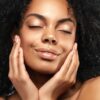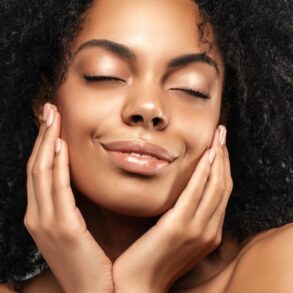For Black Women, Embracing Natural Hair Is About More Than Style
There are few beauty regimens more invigorating than wash day. The routine, or “ritual,” as the filmmaker Lindsay Opoku-Acheampong puts it, is one that countless Black women perform weekly, but they all have a different approach. The process usually involves a hydrating treatment, which might be enhanced by a hooded dryer, if there’s enough time in the day. Shampoo and conditioner are necessary. The most delicate part of the process is combing through knots so tangled that they can feel like metaphors for life; always keep a wide-tooth comb within reach. Opoku-Acheampong directed “Textures,” a documentary that follows three Black women who examine their relationship with their hair. She recalled the wash days in her childhood home, in the Dallas area, where she and her sister would wake up early on the weekends, put on their swimsuits, and trudge to their mother’s bathroom. “She would wash our hair in the shower and then set up her mini-salon kind of thing and press our hair,” Opoku-Acheampong told me. When we spoke over Zoom, she wore her curls down and parted in the middle with a gemmed “BLK GIRLS” hair pin.
View the latest or submit your own film.
Three of Opoku-Acheampong’s friends are the subjects of “Textures,” and they reveal tiresome parts of their hair-care routines that most Black women endure behind closed doors. The camera meets Taylor, Camille, and Azani at different entry points in their natural-hair journeys. Azani has probably been washing and setting her natural hair the longest. In one scene, after taking down a protective style, she spins a lock of hair into a three-strand twist. “It just feels like I’m doing my hair, you know? But I know that once I walk outside of this room—it becomes something more,” she says. Taylor sits on her bed while her fingers unravel golden braids to reveal a crinkled mane, which she struggles to comb through. It was the first time she did her natural hair on her own since childhood. “Being natural is an experience within itself,” Taylor says later in the film.
Opoku-Acheampong also produced and edited the documentary, which she filmed five years ago, during the first year of her graduate program at U.C.L.A. She shared that, like in her other projects, the intention behind “Textures” is to capture a narrative that is “deeply personal, but speaks to something more systemic, and wider.” The friends never interact on camera, yet their stories converge like a triple Venn diagram. After internalizing the fallacy that their hair was inferior, Camille and Taylor learn to embrace their natural hair textures, which includes refining both their wash-day routine and their cocktail of products in ways that suit their curl patterns and porosity. Going natural is a community-based rite of passage. “I was able to find myself and accept my own hair, and recognize, Oh, this is my Black,” Camille says. “This Black is beautiful, too.”
This post was originally published on this site be sure to check out more of their content.







